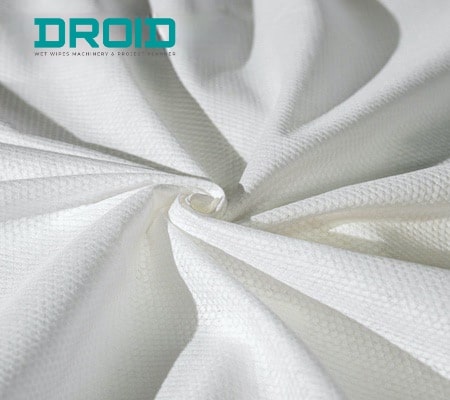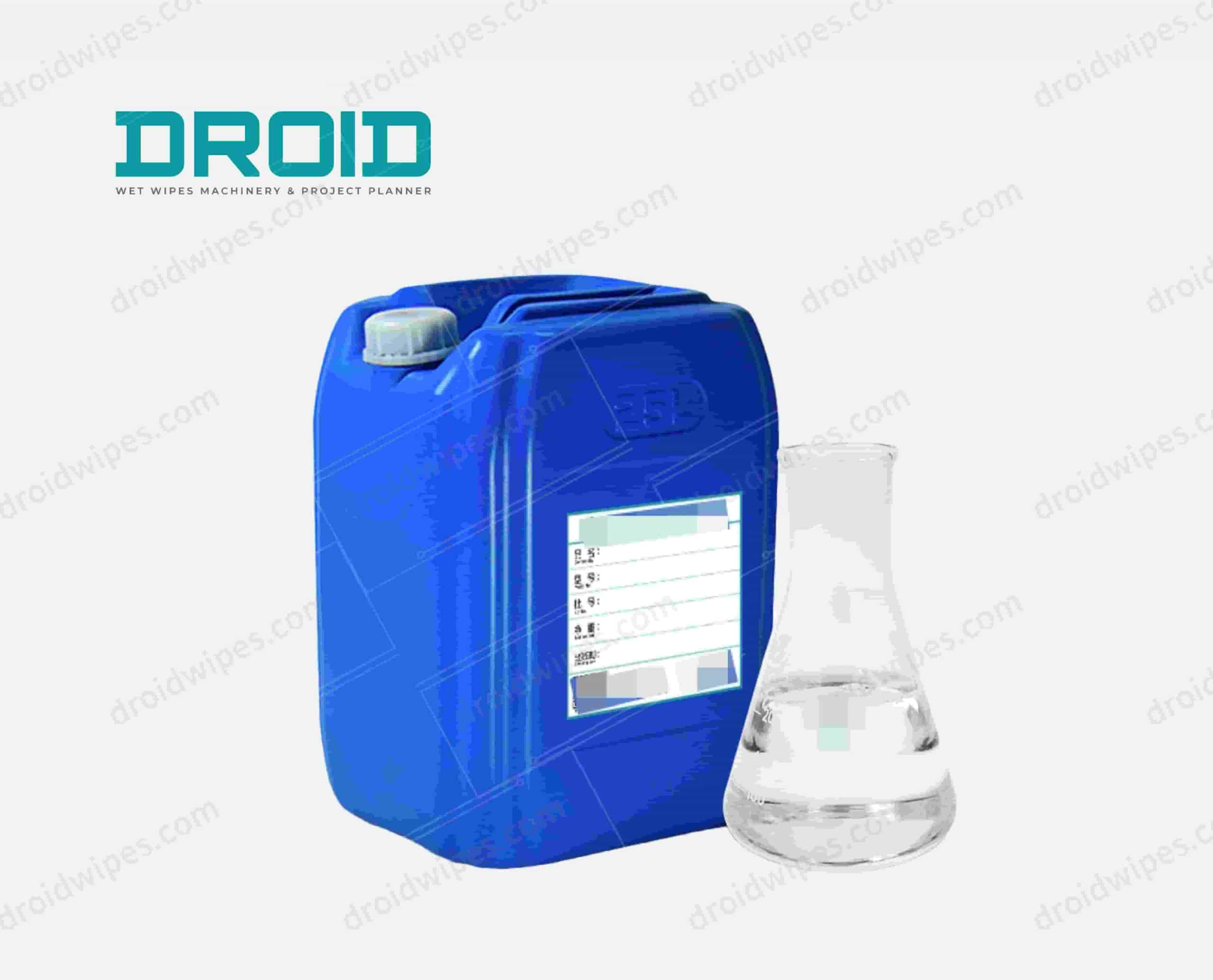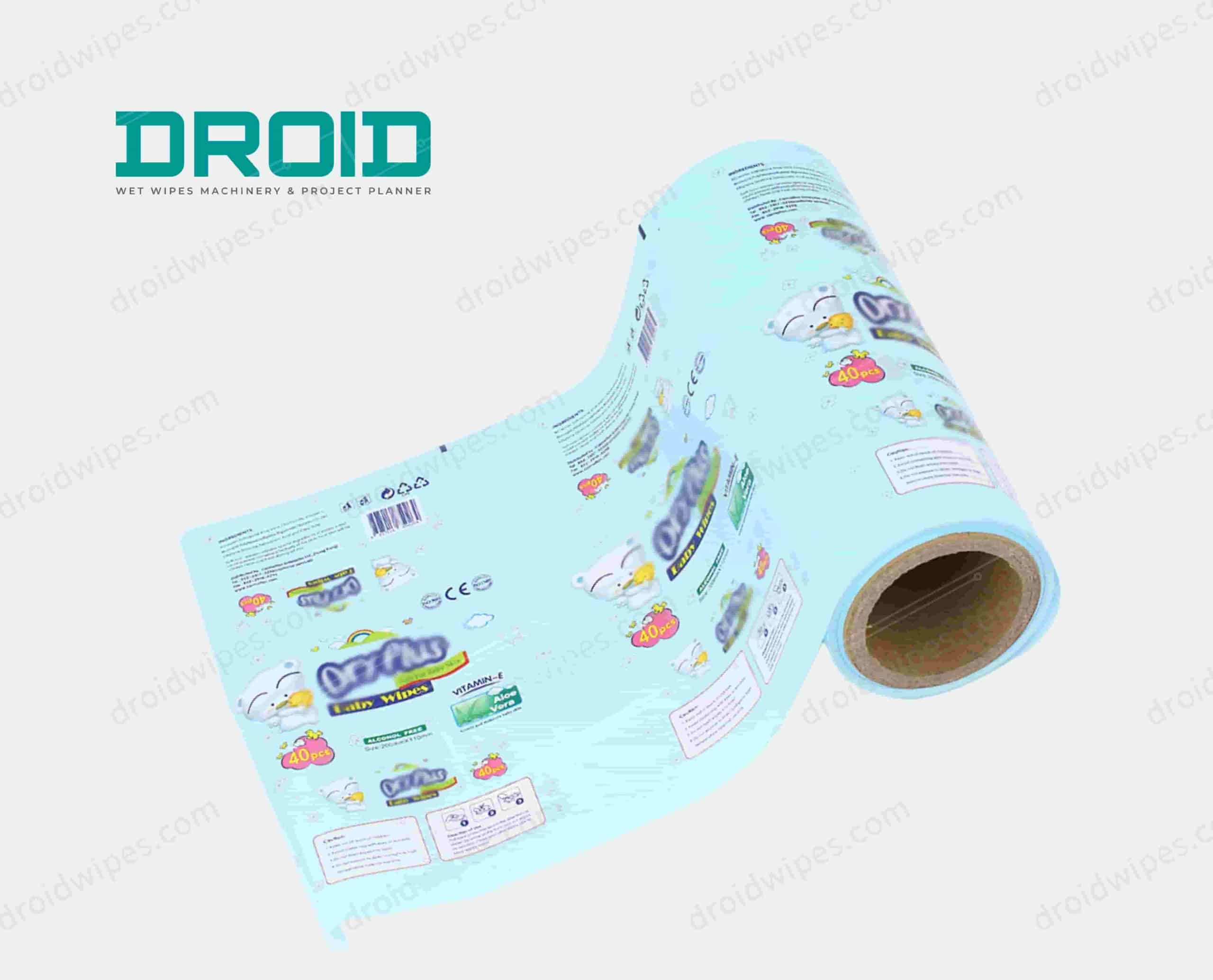Wet wipes have become unsung heroes in a world where convenience is king, quietly transforming how we approach efficiency and cleanliness in our everyday lives. Wet wipes simplify life by helping with all that from personal hygiene to surface cleaning. However, have you ever wondered how wet wipes are made? In this article, we’ll take you on a journey through the fascinating world of wet wipes manufacturing, delving into the raw materials and ingredients that bring these handy products to life.
Let’s briefly review how wet wipes are made before delving into details of the ingredients and raw materials. The fabric, the solution, and the package are the three fundamental parts of a wet wipe. The effectiveness, safety, and user-friendliness of the wipes are all tied to each of these elements.
1. Substrate Material: The Foundation of Wet Wipes
The substrate substance is the quiet cornerstone that holds wet wipes’ success together. This essential element, which is often a nonwoven fabric, is chosen with care to represent a delicate harmony between softness, absorbency, and strength. The complex dance of producing substrates comprises a variety of nonwoven technologies, each designed to satisfy certain requirements.
- Spunlace
With the use of this technique, fibers are interwoven to produce a cloth that is both soft and strong. The resultant substrate is a great option for personal care wipes since it feels opulent on the skin. The delicate touch of spunlace guarantees that the wipes are suitable for even the most fragile skin.
- Spunbond
Spunbond nonwoven textiles, which provide stability and strength, are made by continuously extruding filaments and then spinning them into a web. Industrial and heavy-duty wipes often use this technology because it offers durability without sacrificing absorbency.
- Meltblown
Meltblown technology is a well-known absorbent material that creates microfibers by extruding molten polymer resins via tiny nozzles. The resultant substrate is perfect for cleaning and disinfecting wipes because of its large surface area, which makes it skilled at absorbing and retaining liquids.
The substrate material selection is a calculated strategic move that complements the planned use of the wet wipes. Wet wipes manufacturers painstakingly traverse various nonwoven technologies to design substrates that serve as the cornerstone of wet wipe excellence, whether it’s the delicate touch needed for face wipes, the durability needed for industrial wipes, or the absorbency needed for cleaning wipes.
Substrates are also put through a thorough testing process to make sure they live up to quality requirements. Tensile strength, basis weight, absorbency, and other parameters are carefully examined to ensure the substrate can sustain the demands made on it throughout manufacture, packing, and—most importantly—end-user application.

2. Formulation of the Moistening Solution: The Heart of Wet Wipes
This solution is a symphony of well-selected elements that provide utility, preservation, and a hint of elegance, and it is more than simply water.
Water – The Essential Carrier: Water, the universal solvent, is the fundamental component of the moistening solution. Water is the main component carrier that makes sure the moisture is distributed evenly throughout the wipe. The water used in the formulation must be of a high quality; it’s often treated to get rid of contaminants that might affect the wipes’ stability.
Emollients – Nourishing the Skin: Emollients like glycerin, aloe vera, and other oils are used to provide a calming touch. These ingredients make the wipes soft and enjoyable to use by moisturizing the skin as well as improving its general feel. These emollients are especially important in personal care wipes since skincare benefits are a top priority.
Humectants – Retaining Moisture: To keep the wipes from drying out, humectants like sorbitol are used. These materials draw in and hold onto moisture, keeping the wipes effective for the duration of their shelf life. This is an essential function, particularly for wipes that are meant to be used occasionally.
Preservatives – Safeguarding Freshness: Preservatives are essential for stopping microbial development and preserving the freshness of the moistening solution because of the damp environment. Common preservatives, such as phenoxyethanol or parabens, are dosed and chosen with care to achieve a delicate balance between skin sensitivity and protection.
Fragrances – Enhancing the Experience: Wet wipes are known for their scents, which enhance the user experience in general. Fragrances are carefully chosen to elicit certain feelings and improve the sensory experience of using wet wipes. Examples of these include a little touch of lavender in personal care wipes and a revitalizing citrus burst in cleaning wipes.
Active Ingredients – Catering to Specialized Needs: Wet wipes may include active components like vitamins, extracts, or specialty cleaners, depending on the purpose for which they are being used. For instance, chamomile, which has calming qualities, may be included in baby wipes, while antibacterial wipes can have particular disinfection chemicals.
Preparing the moistening solution requires accuracy and experience, much like making a potion. To guarantee that the solution not only satisfies regulatory requirements but also provides constant performance and user pleasure, wet wipes manufacturers must carry out extensive testing.

3. Packaging: Ensuring Freshness and Convenience
When it comes to wet wipes, wet wipes packaging is the silent hero since it’s crucial to guaranteeing customer convenience and freshness. In addition to being aesthetically pleasing, the wet wipe packaging’s design and material selection are precisely matched to shield the product from the environment while preserving accessibility for users.
a. Barrier Properties: Wet wipe packaging’s main purpose is to serve as a barrier, keeping the wipes safe from outside impurities including dust, air, and microbes. Manufacturers often utilize materials with superior barrier qualities to do this, keeping the wipes from drying out and the moistening solution from evaporating. From the first to the last wipe, the barrier’s integrity guarantees that each wipe keeps its effectiveness.
b. Resealable Features: Given that wet wipe usage is sporadic, resealable features are a common feature on many containers. Whether it’s a snap-close lid or a peel-and-reseal label, these mechanisms work to keep the wipes fresh by limiting their exposure to the environment. The wipes’ ability to be resealed prolongs their shelf life while also improving user convenience by enabling easy access without compromising moisture retention.
c. Portability and Dispensing: Wet wipe packaging is designed to be portable, accommodating a range of customer demands with different sizes and shapes. Travel-sized packs are a convenient way to quickly solve unforeseen circumstances since they fit neatly into pockets or wallets. Larger packs with dispensing lids are common in homes because they allow users to easily remove a wipe with one hand while keeping the remaining wipes sealed and available for use at a later time.
d. Materials Sustainability: Wet wipes manufacturers are using more and more environmentally friendly packaging materials in response to rising environmental concerns. Wet wipe packaging has a minimal negative environmental effect when made using recyclable and biodegradable materials. This change demonstrates a dedication to reducing ecological footprints as a larger aim in addition to the product’s effectiveness.
e. User-Friendly Design: Wet wipe package design considers the user’s experience in addition to functionality. Clear labeling, well-positioned dispensing apertures, and easy-to-open lids all add to a smooth user experience. The simplicity with which customers may integrate wet wipes into their everyday lives is a factor in the success of the product, as wet wipes manufacturers are aware.
f. Branding and Information: Packaging represents a brand visually and communicates its identity and core values. Enhancing transparency and fostering customer trust is achieved by providing clear and straightforward information on the package, such as ingredient lists, use directions and any extra product benefits. Properly designed packaging conveys the brand’s dedication to excellence while simultaneously safeguarding the goods.

As the mysteries behind the production of wet wipes are revealed, it becomes evident that much consideration goes into the selection and blending of these handy goods’ constituents. Wet wipes manufacturers must master the delicate dance of balancing substrate materials, moistening solutions, perfumes, additives, and packaging to produce wipes that satisfy a wide range of customer demands. Through a strict commitment to quality control and regulatory requirements, the wet wipes sector makes sure that these commonplace items prioritize customer safety and satisfaction in addition to providing convenience.
Next time you reach for a wet wipe, you’ll have a deeper appreciation for the thought and expertise that goes into crafting these convenient companions. So, whether you’re using them for personal care, cleaning, or any other purpose, you can trust that the combination of materials and ingredients will get the job done effectively and efficiently.
Are you looking for a reputable wet wipes raw materials supplier? Contact us now.

